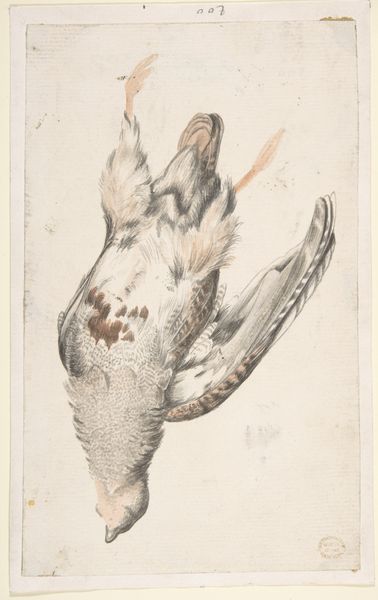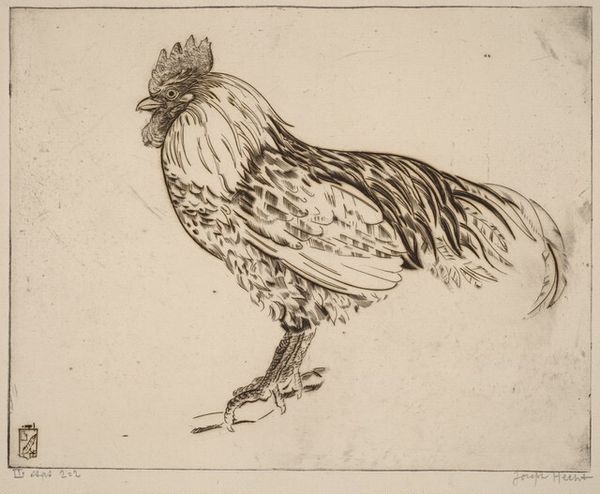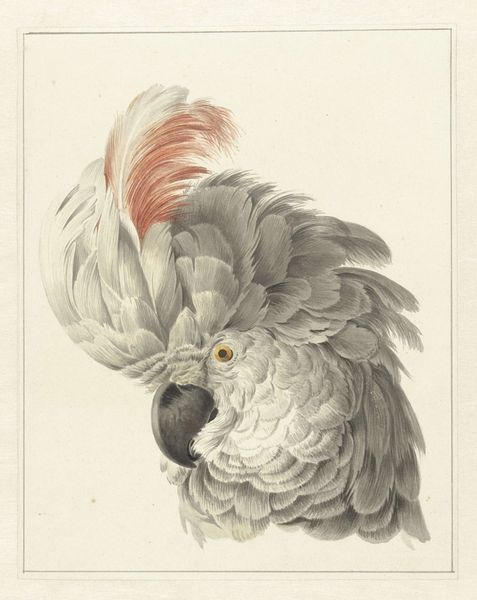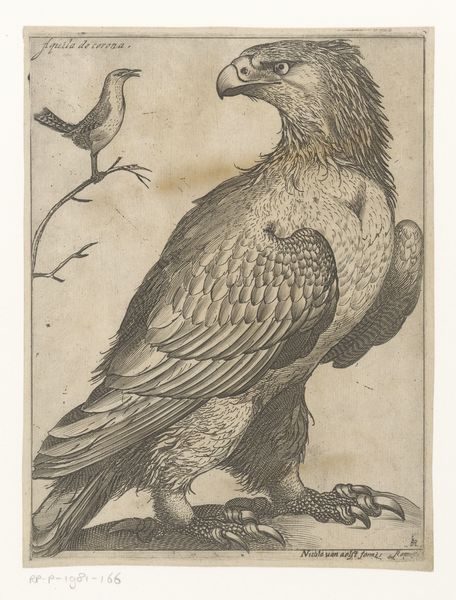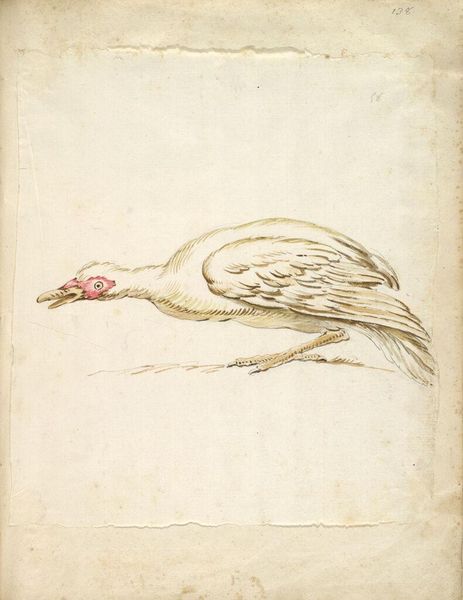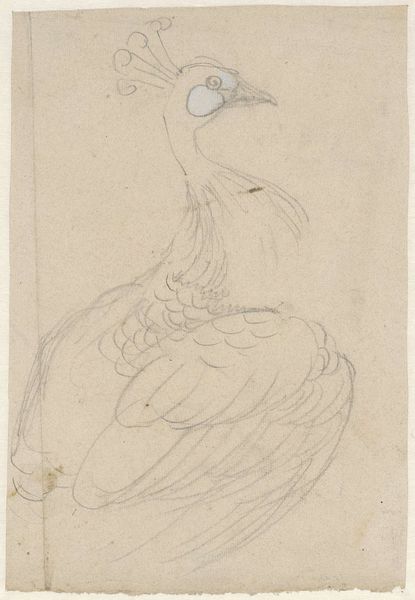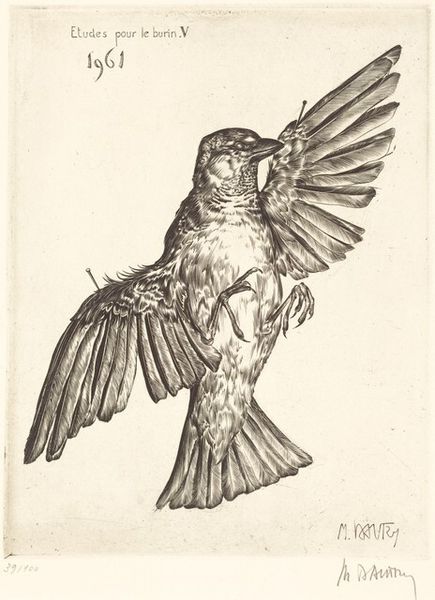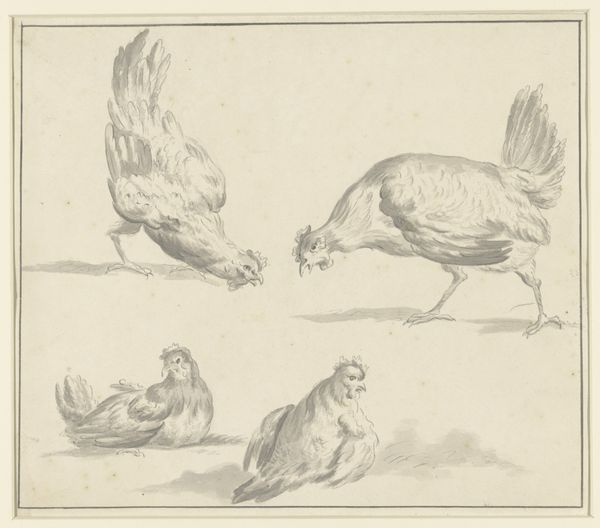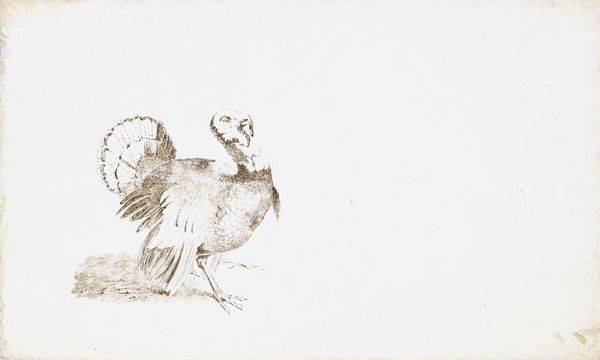
drawing, coloured-pencil
#
portrait
#
drawing
#
coloured-pencil
#
pencil drawing
#
coloured pencil
#
academic-art
Dimensions: height 140 mm, width 156 mm
Copyright: Rijks Museum: Open Domain
Curator: Let's discuss Jean Bernard's "Head of a Dead Chicken," created sometime between 1775 and 1833, currently residing in the Rijksmuseum. It's a colored pencil drawing that strikes a unique chord. Editor: It certainly does. My initial impression is of its delicate yet somewhat unsettling realism. The way the artist captured the texture of the feathers and the limpness of the neck… it's both beautiful and slightly macabre. Curator: Absolutely. The depiction, focusing on mortality and perhaps the relationship between humans and animals within a colonial Dutch context, raises some complex questions about how these themes have been historically portrayed. How might its reception have varied across different socioeconomic groups? Editor: That's a crucial point. Formally, I’m drawn to the use of color. The muted palette – the browns, grays, and touches of red – emphasizes the lifelessness, yet it's rendered with such precision that it almost elevates the subject to something… monumental, in its own small way. Semiotically, the averted gaze and stillness speak volumes about the loss of agency. Curator: Precisely. And beyond that, the context of still life as a genre comes into play. This isn't just a dead chicken; it's a representation laden with meaning. What does it say about food, consumption, and the societal hierarchies inherent in those acts? Consider the parallel artistic traditions in Indonesia under Dutch rule—were there shared themes or reactions to representations of sustenance and power? Editor: The composition itself, so focused and centered, directs our attention ruthlessly. The texture work achieved with coloured pencil really accentuates the neck's limp pose and closed eye, almost beckoning consideration and perhaps meditation, but about what exactly? Death? Animal subjugation? It's left intriguingly unresolved, I think. Curator: I agree, that sense of irresolution makes it thought-provoking. Thinking about contemporary discourses surrounding animal rights, environmental ethics, and histories of violence embedded in our food systems, a drawing like this becomes powerfully relevant again, sparking renewed debate and understanding. Editor: It highlights the skill involved in its realistic depiction, almost bringing out its individual form rather than objectifying it for symbolic or practical use. It stands on its own, really demanding the observer acknowledge it as form beyond function. Curator: Examining it through an intersectional lens challenges viewers to grapple with layers of history, inviting deeper reflections on humanity's ethical considerations and impacts in the present. Editor: Indeed, and formally, too, it is an outstanding testament to what precision and focus can communicate using only coloured pencil.
Comments
No comments
Be the first to comment and join the conversation on the ultimate creative platform.


